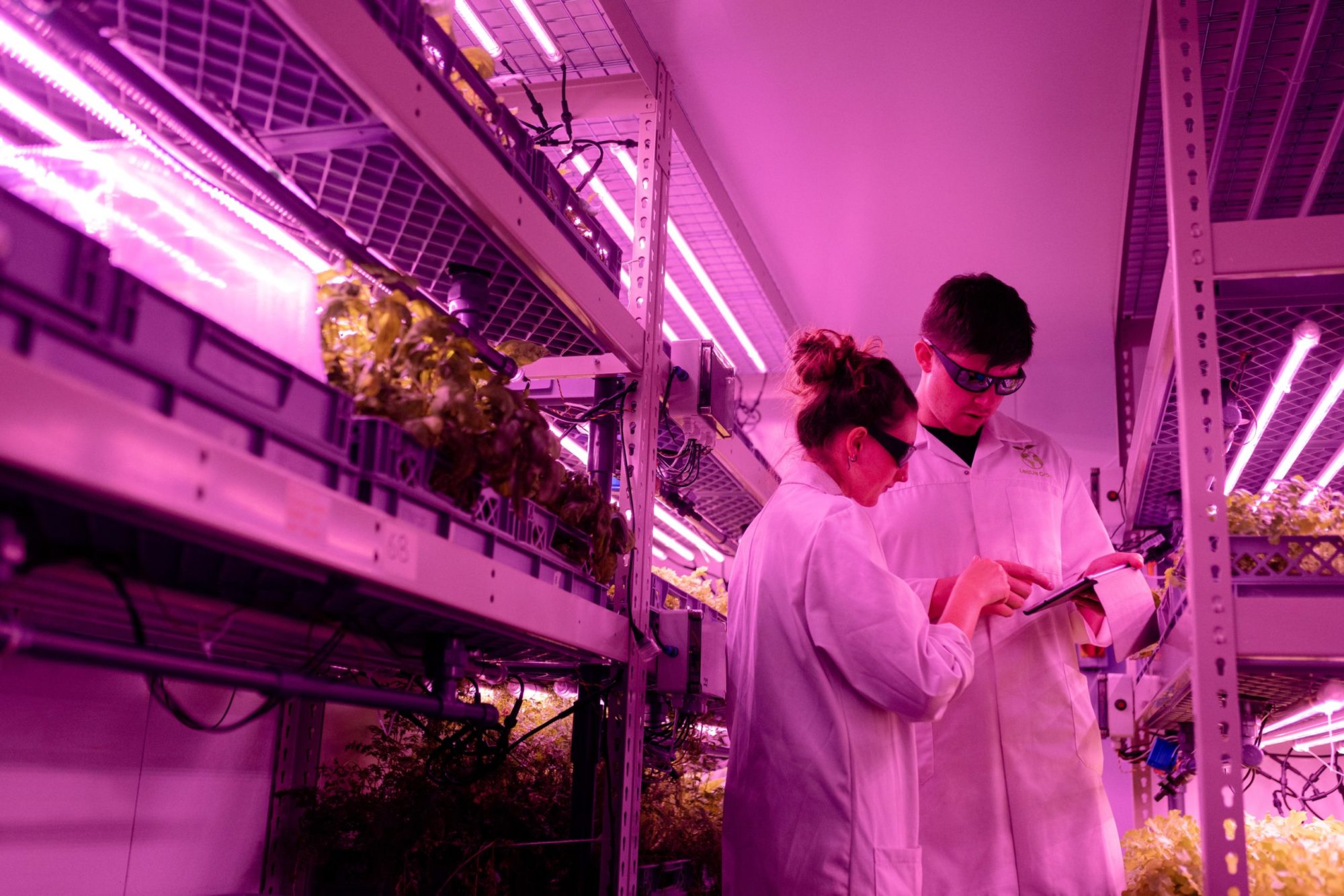With the global population booming and land for agricultural expansion steadily running out, scientists have searched for creative solutions to provide for the additional 2.2 billion people that will live on the planet in 2050. Global reduction of food waste and meat consumption have gained recognition for having the potential to make a significant dent in our ecological footprint. But what if we could solve our climate problem–and our food problem–with gene editing that can give crops environmental superpowers?
CRISPR-Cas9 is a gene-editing technology that can remove, add, and alter targeted pieces of DNA. It has the potential to cure genetic diseases like Huntington’s disease or sickle-cell anemia. Medically, this is a colossal breakthrough. Agriculturally and environmentally, it’s equally exciting.
From Medicine to Farming
As with any technology verging on the realm of science-fiction, CRISPR’s use in humans carries ethical concerns that require careful deliberation. Crops, however, are much more straightforward. Scientists in China, a country of 1.4 billion people, are looking to CRISPR to increase crop yields.
Experiments on plants are promising. So far, the technology has shown tremendous potential and has already produced crops with climate change superpowers. Scientists have already created:
- A variety of rice that yields 25-30 percent more grain
- Corn that grows well in drought conditions
- Bananas and cacao beans that are resistant to diseases that have devastated them in the past
- Soy that is higher in protein
- Healthier canola oil
These accomplishments are a milestone. Higher production, reduction of crops lost to disease, and higher nutrition all hold a crucial implication: the ability to feed more people with less land. Efficient land usage is significant because the less land we dedicate to farming, the more forests can be left standing and wildlife left untouched.
Giving Plants Environmental Superpowers
But it doesn’t stop there. The ability to edit the genomes of plants can do more than mitigate climate change–it can even aid us in preventing it. Scientists can alter crops to sequester more carbon and become 25 percent more water-efficient.
Gene-editing can solve another climate dilemma: nitrogen pollution. Whether farmers use compost, manure, or synthetic fertilizer to deliver nutrients to their crops, they deposit nitrogen into the soil. Nitrogen is essential for helping plants grow, but crops only use about 50 percent of nitrogen spread by farmers. The other half of it gets eaten up by bacteria in the soil and released into the air as nitrous oxide, a gas that traps 300 times more heat than carbon dioxide and depletes the ozone layer. Excess fertilizer also runs off into our water systems, creating algae blooms that are deadly to ecosystems. Currently, biologists are working on adding a gene to crops that will enable them to produce nitrogen from the air. Giving plants the environmental superpowers of making nitrogen out of the air would be a game-changer.
Gene-editing technology poses a cutting-edge opportunity to repair our food crisis, and farmers are utilizing it on our food systems. Already, Japan is selling gene-edited tomatoes that lower blood pressure.
Informing the Public
It will be necessary for consumers to be well informed and cautious of misinformation as new biotechnology makes its way into the market. When genetically modified organism (GMO) foods hit the market, they never got to meet their full potential. Instead, consumers were scared off with misinformation. While fundamentally different from GMOs, gene editing holds that same science-fiction element that makes it easy to fearmonger the public.
But times are changing: our planet is warming, and our resources are shrinking. We can no longer afford to sacrifice real solutions and opportunities unless fears are based on factual evidence. Scientists have proven that GMOs are safe, and while genetically edited crops are still in the early stages, no reason has come up for them not to be equally safe. In fact, gene editing does not involve transferring genes from one species to another, which was the aspect of GMOs that concerned the public.
Technology like CRISPR alone will not solve our climate crisis or our food crisis. Nonetheless, it is a development that we desperately need. We must take care not to repeat the same mistakes that we made upon the invention of GMOs. Consumers should pay close attention to high-quality information. Additionally, public opinion should not take precedence over scientific evidence for driving legislation.
To keep up with the latest advances and legislation involving genetically edited crops, check out Frontiers. The International Service for the Acquisition of Agri-biotech Applications (ISAAA), an international organization that shares knowledge of crop biotechnology with developing countries, is another great source to follow. In addition to distributing the latest research to developing countries, the ISAAA aids in capacity-building services such as regulatory oversight and updates its website with new advances in crop biotechnology, including CRISPR.
- Gene Editing for Crops with Environmental Superpowers - July 14, 2021
- Environment or Economy: Why Not Both? - June 30, 2021
- Unpacking the Humanitarian Crisis in Tigray, Ethiopia - June 16, 2021
